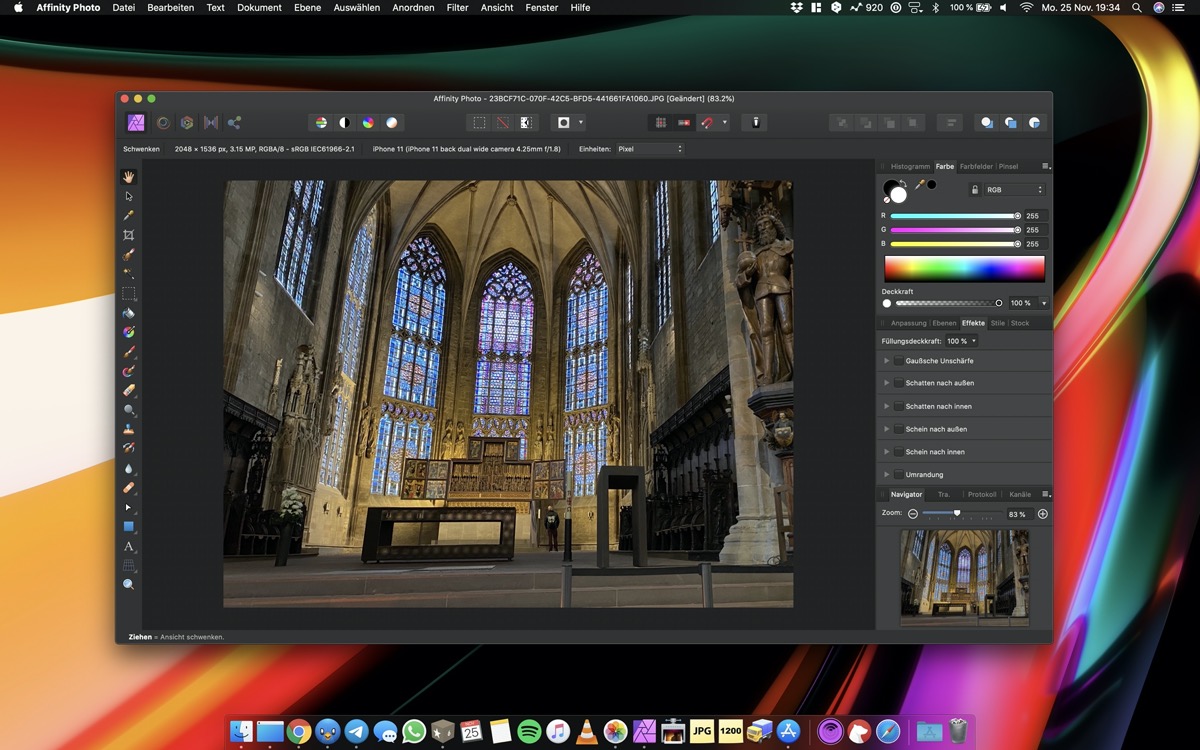

Skylum charges for each major upgrade of Luminar (which comes on a roughly yearly basis). Affinity Photo 1.9 offers a lifetime license at $50 (for all devices running the same operating system) and Luminar 4 at around $80 (for 1 device).īoth offer frequent promotions such as Affinity’s 50% off promotion that happens at this moment. On the other hand, Affinity Photo only requires just 4 GB of RAM and can run fast and errorless even on the edge of system requirements.īoth editors are serious competition for Adobe’s products in terms of price and features. But it’s still annoying and time-consuming. Luckily, Luminar 4 automatically saves your edits while you make them thus you don’t lose your work.

They also tend to require more RAM than the vendor mentions.įor example, working in Luminar 4 on a Windows 7 system with just 8 GB of RAM can be very tricky, slow, and prone to crashes. Photo editors tend to be slower on Windows systems, especially for older versions of Windows. It worth saying that Affinity Photo’s latest update comes with well-needed hardware acceleration for Windows 10 systems with a Direct3D level 12.0-capable card.
#Affinity photo reddit for mac#
Resourceĩ53 MB for Windows, 2.8 GB for Mac (more during installation) Check out the technical requirements of Luminar 4 and Affinity Photo before making a decision. If you’re one of those photographers who want to focus solely on photography, you have to choose reliable and low-maintenance software.
#Affinity photo reddit update#
How often do you change your laptop or operating system? How often do you update the RAM, graphic card, or hard disk? Technology advances so fast that is becoming more difficult and expensive to keep up with it. So let’s take a closer look and Affinity Photo and Luminar 4. Although some features may seem far away from a photographer’s interests, you never know when you’re going to need them or how they will impact your work.

We want to help you choose a comfortable editor, user-friendly and reliable. Everything matters, from speed and technical requirements to the user interface, variety of local adjustments, layer management, and the range of filters. When we compare two editors, we take into consideration all their powerful features, not only photo retouching tools. But which one provides the smooth workflow you need in order to spend more time taking photos than editing them, while at the same time giving you enough control over the post-processing steps, that you need? We need a comprehensive and detailed comparison to make an informed decision. Both have strong communities around them, provide regular updates, and offer a fresh approach to editing photographs. These two image editors offer a wide range of adjustments, presets, batch processing, RAW support, and much more. In this article, we look at Affinity Photo vs Luminar from a photographer’s perspective.ĭownload our Free ebook: Quick Start Guide to Affinity Photo

Luminar embraces Artificial Intelligence (AI) and aims to provide automatic tools for fast and efficient editing without too much human intervention. The first (Affinity Photo) aims to provide advanced tools for adjusting and fine-tuning each aspect of your photos. Affinity Photo 1.9 and Luminar 4 have different perspectives on photo editing.


 0 kommentar(er)
0 kommentar(er)
